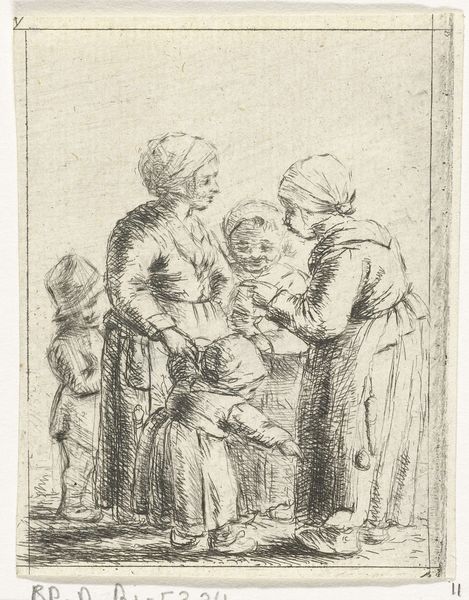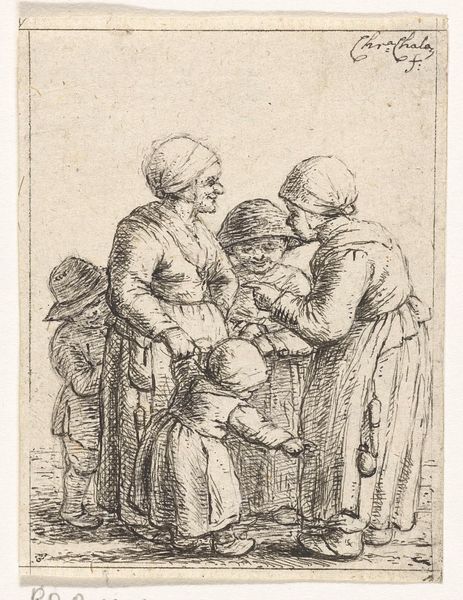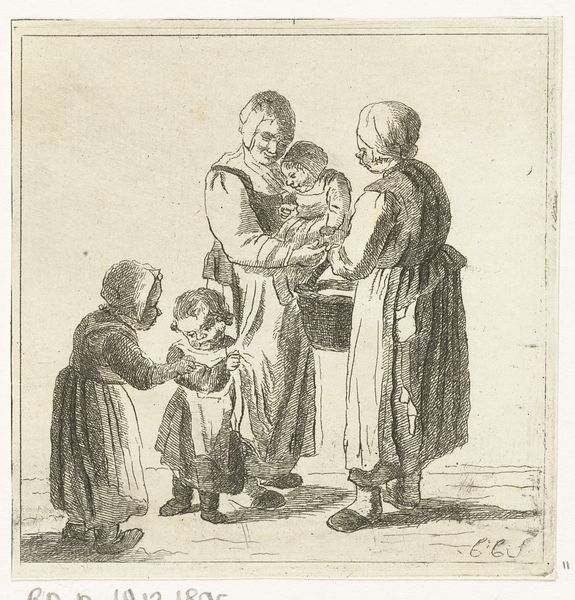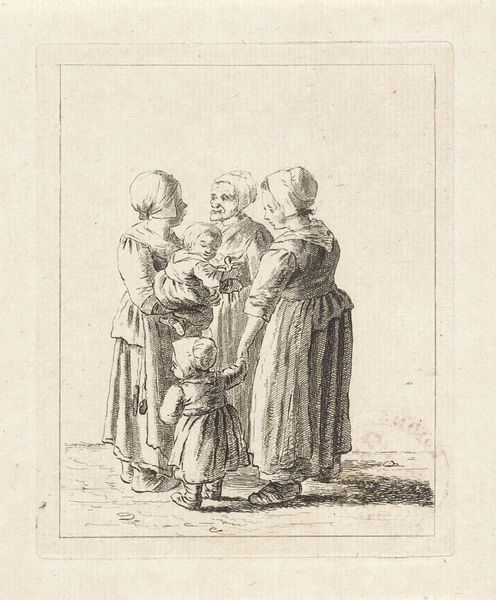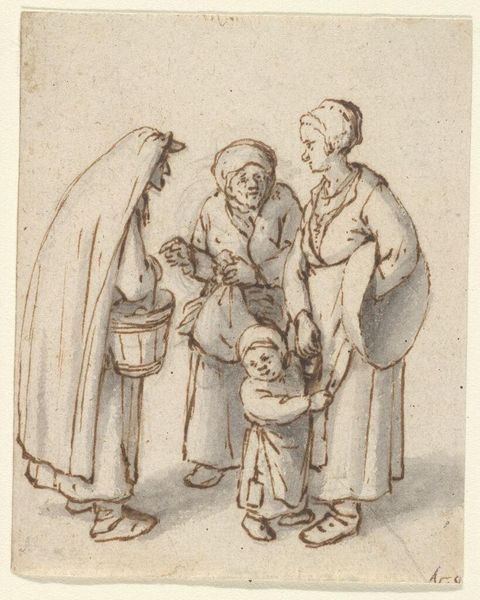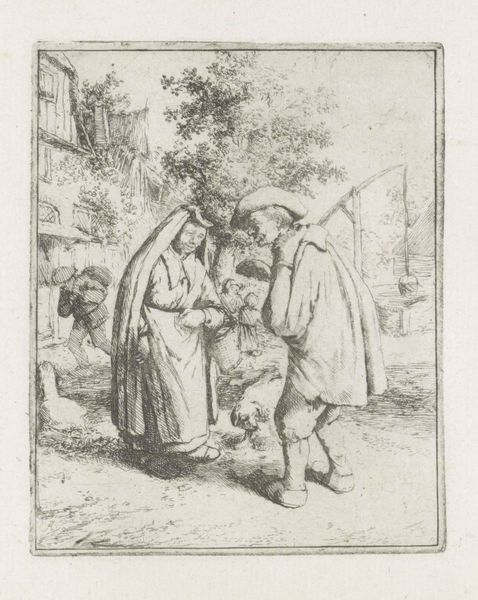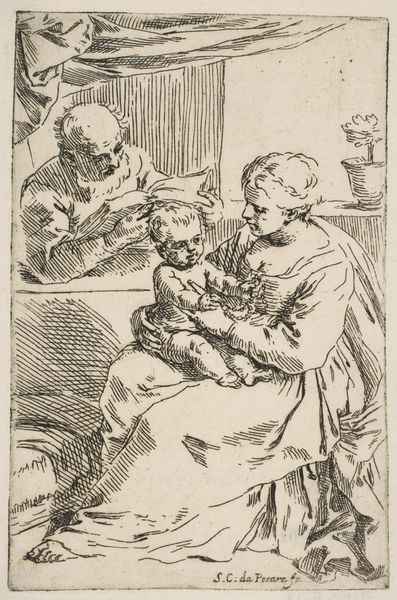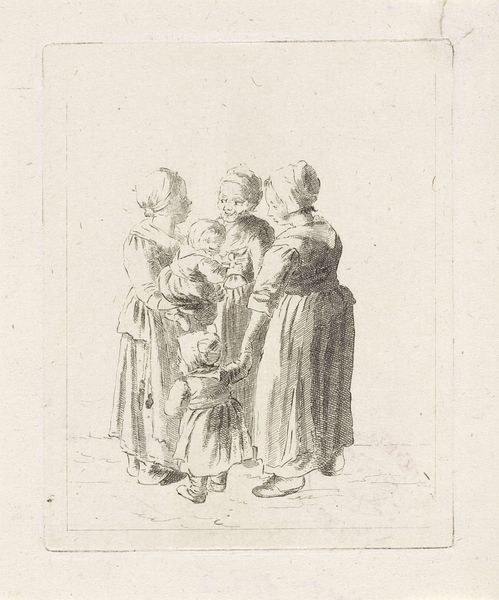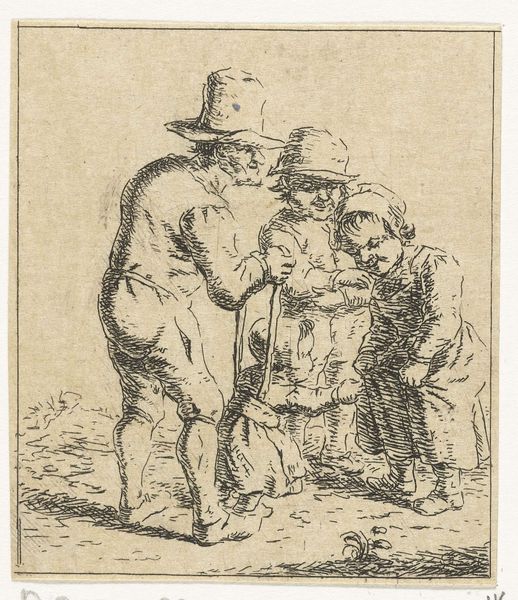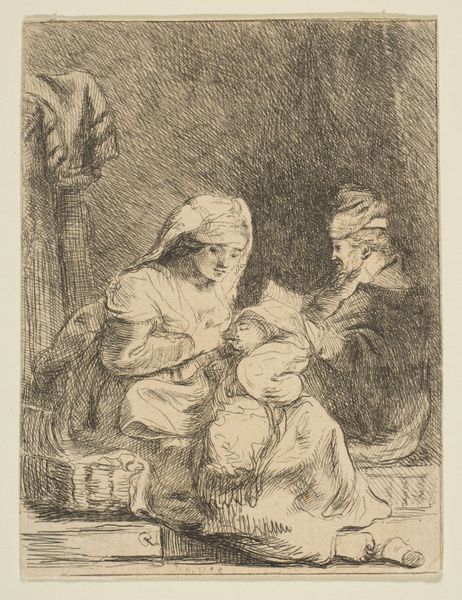
Dimensions: height 76 mm, width 59 mm
Copyright: Rijks Museum: Open Domain
Christina Chalon etched this tiny scene of "Three Women Conversing," now held at the Rijksmuseum. At its heart lies the enduring symbol of the veil, or headscarf, worn by each woman, which transcends mere fashion. In numerous cultures and eras, it signifies modesty, protection, or marital status. Consider the veils of Byzantine empresses, the humble kerchiefs of Dutch peasants, and even the draped figures in Renaissance paintings. Each iteration carries its own story, shaped by religious doctrine, social custom, and personal expression. The act of veiling taps into a deep-seated psychological impulse: the desire to conceal, to protect, and to define one's place within a community. Yet, veiling is also a potent act of unveiling—revealing identity through what it chooses to conceal. From ancient rituals to modern fashion, the headscarf is a testament to the human impulse to communicate through visual cues. As it continually reappears and transforms, it is a vivid reminder of our shared visual language.
Comments
No comments
Be the first to comment and join the conversation on the ultimate creative platform.
